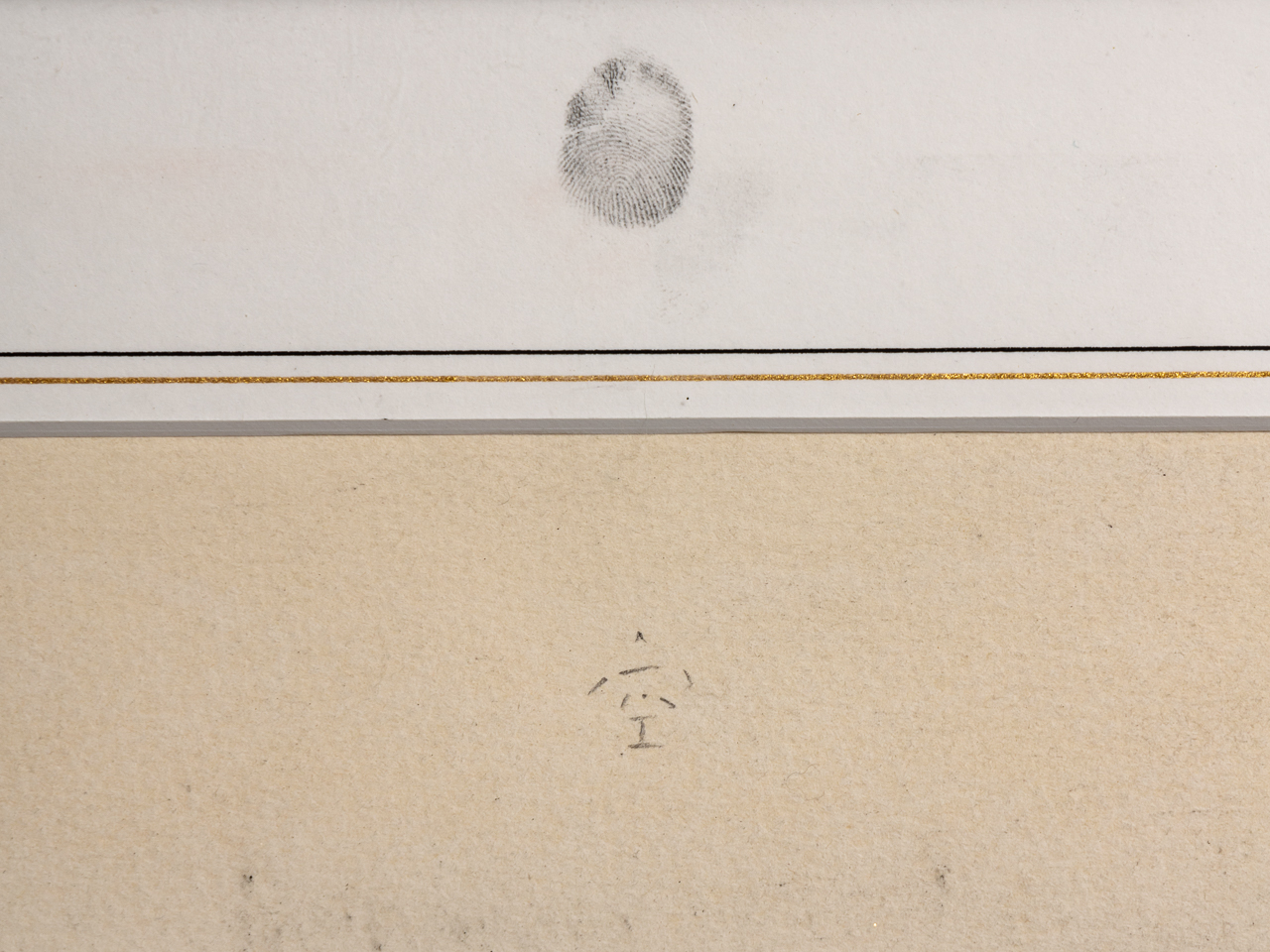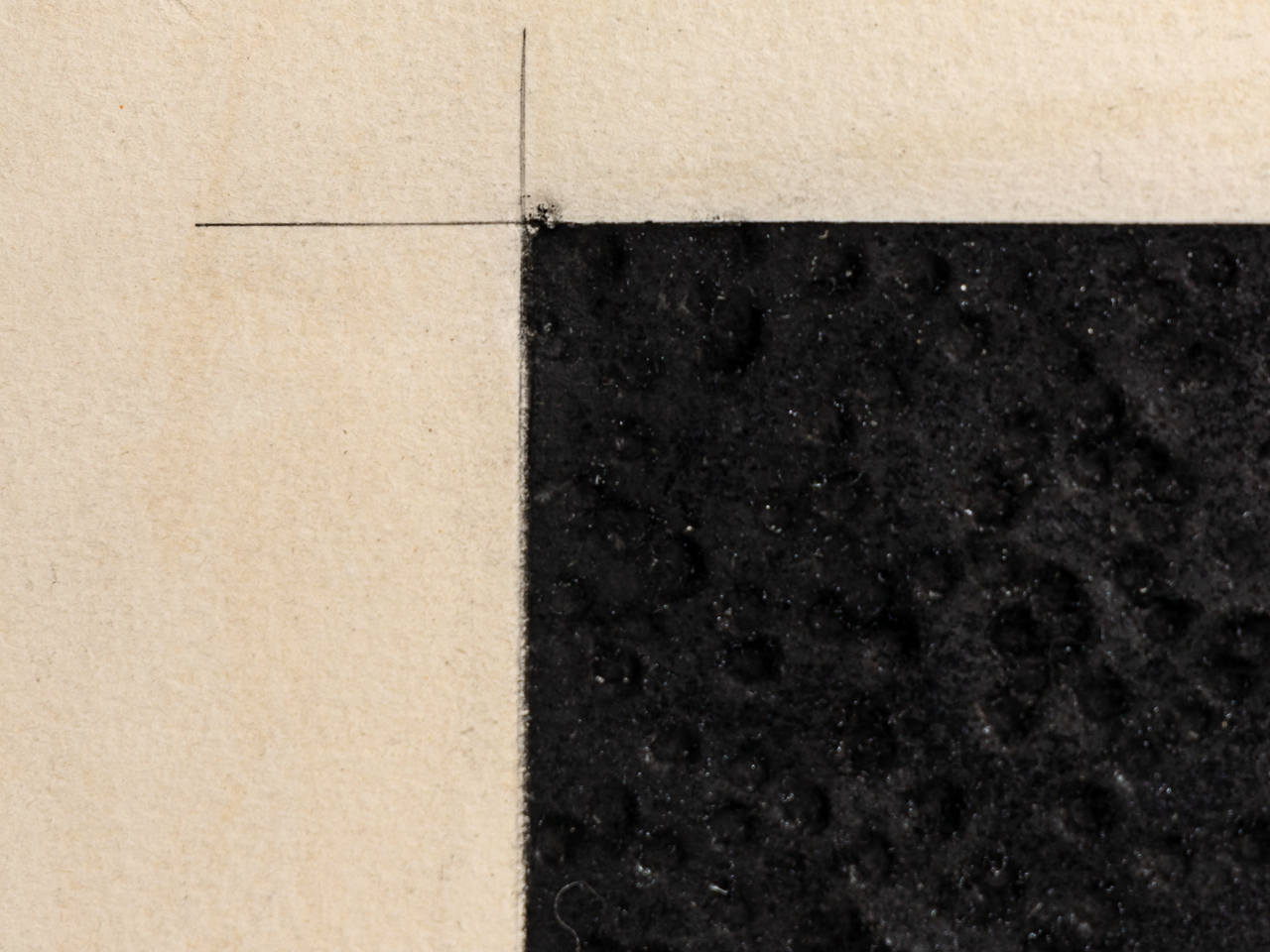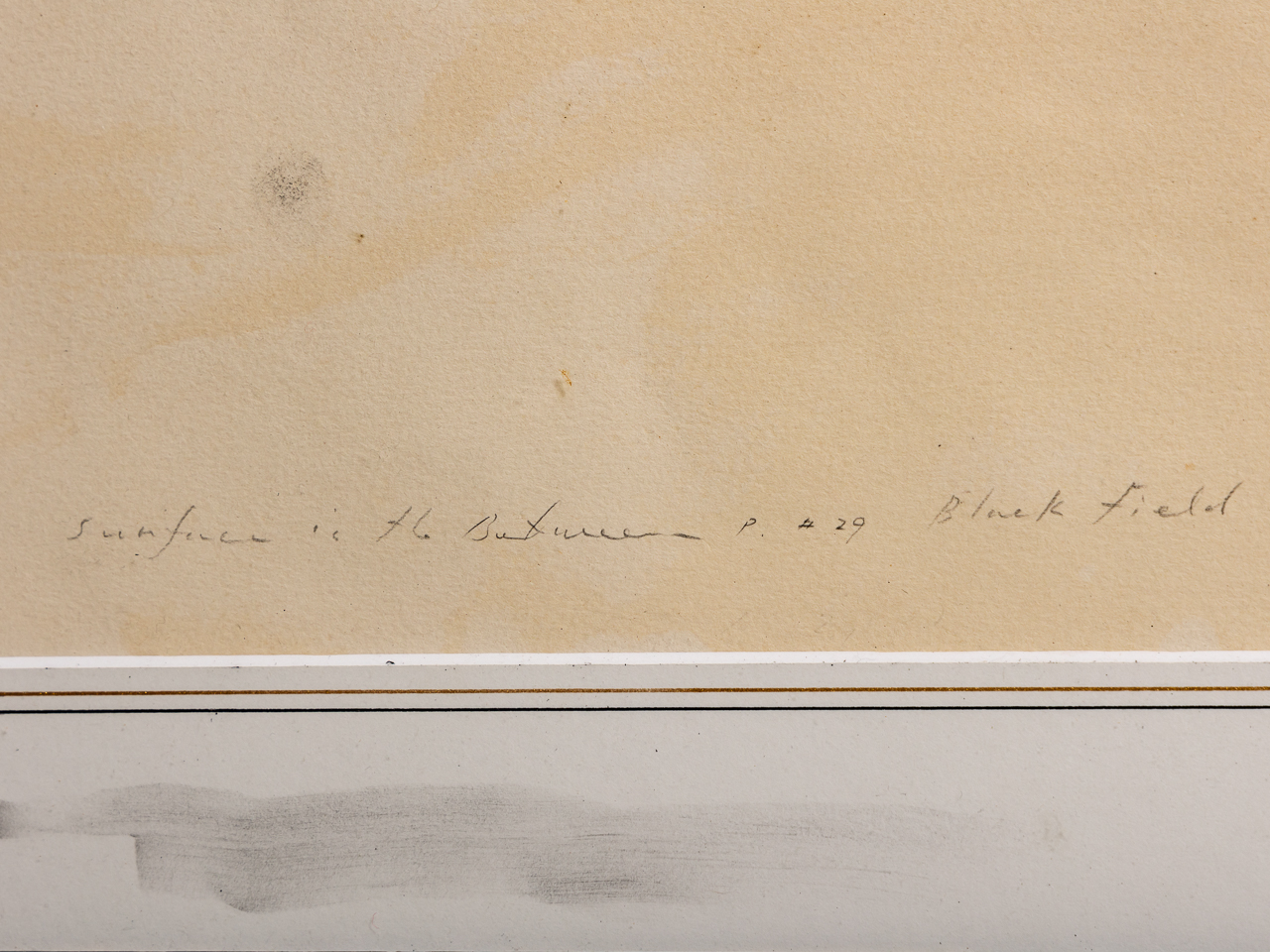井田 照一/Ida Shoichi
井田照一(1941~2006)は生まれ育った京都を拠点に国内外で活躍した、日本を代表する版画家です。
井田は1960年に京都市立日吉丘高等学校の美術工芸課程西洋画科を卒業後、京都市立美術大学(現・京都市立芸術大学)に入学しました。同大学でも引き続き西洋画科に在籍して油彩に取り組みますが、幼い頃から関心を持っていた自然の力や存在をありのままに表現しきれない絵画の限界を感じるようになります。こうした問題を解消する手法として出会ったのが、版画です。その頃、同大学では彫刻科教授の辻晉堂(つじしんどう・1910~1981)が1960年に木板とエッチングの授業を導入し、さらに1963年からは吉原英雄(1931~2007)と古野由男(1909~1978)が西洋画科の講師として迎えられ、版画の集中実技を実施しました。このような環境に身を置いていた井田は、やがて石版画の技法を独学で身につけ、版画による作家活動を展開していきます。
「具体美術協会」に代表されるような、個性、身体、情動が重視される当時の美術界の潮流に対して、井田は作家の筆跡や情緒を排除し、明るい色彩と明快なフォルムが際立つリトグラフを制作し、東京国際版画ビエンナーレ展に招待されるなど注目を集めました。昭和40年代(1965~1974)は、いわゆる日本の現代版画の黄金時代であり、井田の初期作品もまたその時代に位置づけられるものとして重要な意味を持ちます。その後シルクスクリーンの技法も加わり、作品はさらにポップアートの様相を呈していきましたが、1969年から1970年にかけて滞在したパリで、ミニマル・アートで知られるカール・アンドレ(1935~2024)や作曲家のジョン・ケージ(1912~1992)との交流を経た後、その作風は版画の枠組みを超えて実験性を帯びていきます。たとえば、版画とインスタレーションの融合である【Conception】(1974年)や、2枚の版だけで50点もの異なるイメージを刷りあげた【The Spy Surrounds the Spy】(1974年)は、オリジナルとコピーの問題、ひいては「版画とは何か」という根源的な問いに対する、井田なりの一つの答えが示されていると考えられます。
そうした試みの末、1970年代中頃から始まった「Surface is the Between(表面は間(あいだ)である)」なるコンセプトは、紙と版の間にイメージが生まれるという版画の概念を表しており、彼の評価を決定的なものにしました。1987年に発表された【Surface is the Between-Between Vertical and Horizon-Descended Triangle-Circle】では、従来の版画技法に加えて、版に直接腐食液をかけたり刷毛で塗ったりするスピットバイトアクアチントという手法を採用し、自然の力が素材にどのように働きかけているのか、その痕跡を克明に残しました。垂直に落とした腐食液が水平に広がっていくように、表面とは垂直と水平の接点であり、時間と空間の交わるところでもあると捉えた井田は、絵画による直接的な描写ではなしえなかった自然の姿を、版画の工程によって間接的に表現したのです。他にも陶やブロンズ、紙パルプなど様々な素材が駆使され、その創作の幅は晩年に至るまで拡大し続けました。井田の功績が、現代版画の枠組みにとどまらないことは言うまでもありません。
Shoichi Ida (1941-2006) was a prominent Japanese printmaker. Born and raised in Kyoto, he established his base there and was active both within Japan and internationally.
After graduating from Kyoto Municipal Hiyoshioka High School in 1960, Ida enrolled in Kyoto City University of Arts (now Kyoto City University of Arts). Although he continued his studies in oil painting, he soon began to feel the limitations of the medium. He found it difficult to fully express the true power and existence of nature, something he had been fascinated by since childhood. Coincidentally, the university introduced woodcut and etching classes in 1960. Then, in 1963, Hideo Yoshihara (1931-2007) and Yoshio Furuno (1909-1978) were invited to teach intensive printmaking workshops in the Western painting department. In this stimulating environment, Ida eventually taught himself lithography and began to focus his artistic endeavors on printmaking.
In contrast to the prevailing art trends of the time, such as those championed by the Gutai Art Association which emphasized individuality, the body, and emotion, Ida’s lithographs stood out. He intentionally eliminated the artist’s personal “handwriting” and emotion, producing works characterized by their bright colors and clear forms. This approach garnered significant attention, leading to invitations to prestigious events like the Tokyo International Print Biennial Exhibition. The period from 1965 to 1974 is often referred to as the “golden age” of contemporary Japanese printmaking, and Ida’s early works are considered important within this historical context. He later incorporated silk-screening techniques, giving his prints a more Pop Art-like aesthetic. However, it was during his stay in Paris from 1969 to 1970, where he interacted with minimalist artist Carl Andre (1935-2024) and composer John Cage (1912-1992), that he truly began to recognize the significance of his unique printmaking style. Following this period, his work became increasingly experimental, pushing beyond the traditional boundaries of printmaking. Notable examples include “Conception” (1974), a fusion of print and installation, and “The Spy Surrounds the Spy” (1974), which involved printing 50 distinct images from just two plates. These works are seen as Ida’s profound exploration of fundamental questions surrounding originality versus copying, and by extension, “What is print art?”
Ida’s concept of “Surface is the Between”, which he developed in the mid-1970s, became a defining aspect of his reputation. This concept represents printmaking as the creation of an image “between” the paper and the plate. In works like “Surface is the Between – Between Vertical and Horizon – Descended Triangle – Circle”, he expanded beyond traditional printmaking techniques by employing spit bite aquatint, where a corrosive solution is directly applied or brushed onto the plate. This process deliberately leaves visible traces of how natural forces interact with the material. Just as a vertically dropped corrosive liquid spreads horizontally, the “surface” becomes the point of contact between the vertical and the horizontal, representing the intersection of time and space. Ida also incorporated a diverse range of other materials, including ceramics, bronze, and paper pulp, continuously expanding his creative scope until his later years. It is clear that Ida’s achievements extended far beyond the confines of contemporary printmaking.






作品名:Surface is the Between P.#29 Black Field
サイズ:77×61cm(1979年 紙にパステル)
価格:SOLD OUT
価格は税抜き表示です

